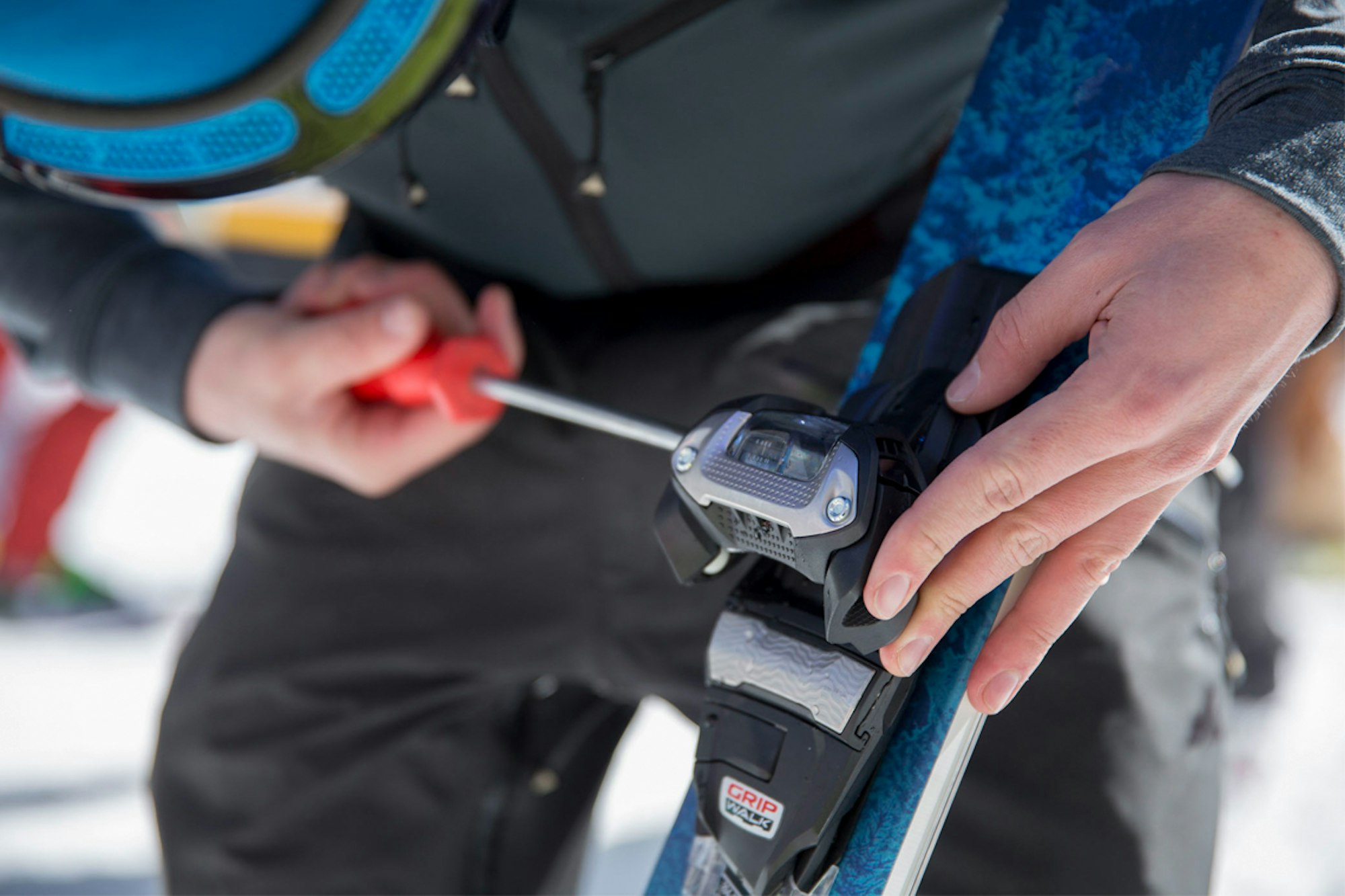Featured Image: Matt Power
Ah, the binding, an often overlooked, but essential piece of ski gear. A secure bond between your boot, binding and ski is what allows you to drive your ski to kingdom come, and also what keeps your knees safe all season long. Below, find the best ski bindings of year.
1. G3 ZED 12
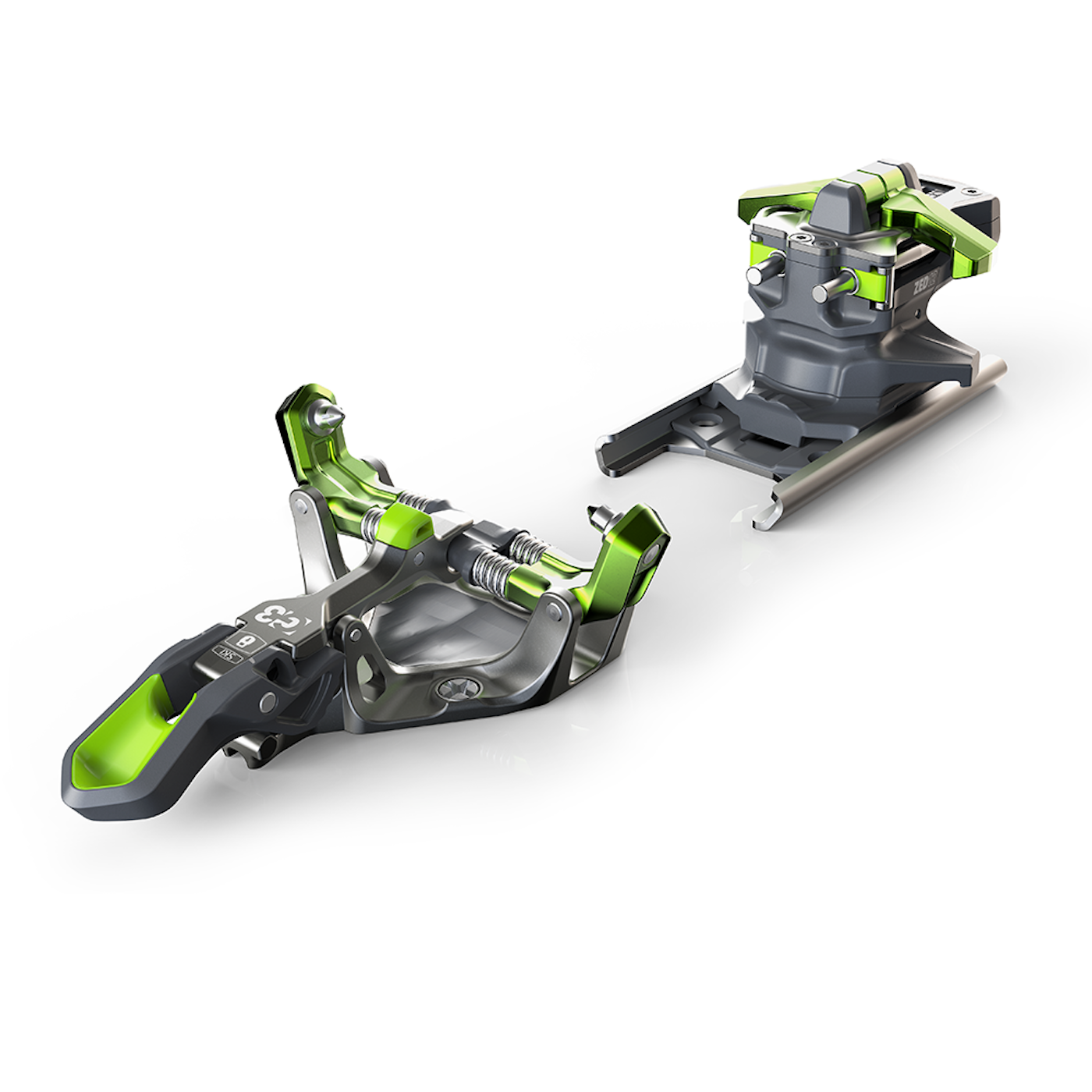
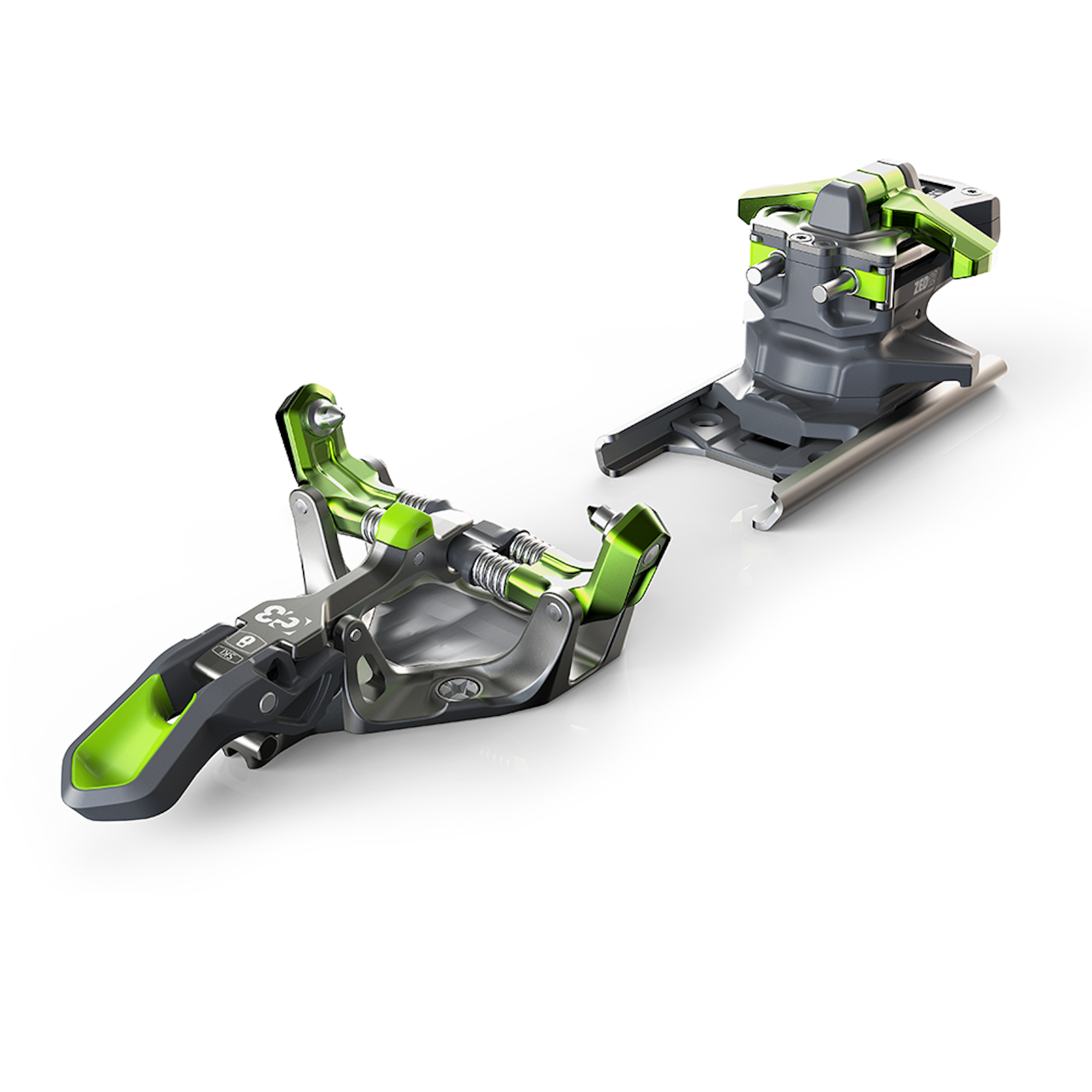
G3’s new ZED 12 strives, in part, to alleviate the tendency of many backcountry skiers to lock out their tech toepiece when descending no-fall zone terrain. The thought being that ejecting on a dangerous face is a worse fate than, say, a knee injury sustained from a locked-out toe. G3 solves this issue using what it calls “unique jaw dynamics,” allowing the toepiece to absorb up to 50 percent more energy than its predecessor (the Ion) prior to releasing, eliminating the need to lock it up on the way down. Skiers looking for jaw-dropping weight savings—the ZED registers 345 grams per binding, without brakes—paired with reliable downhill retention, step right in.
2. Cast Touring Freetour Upgrade Kit
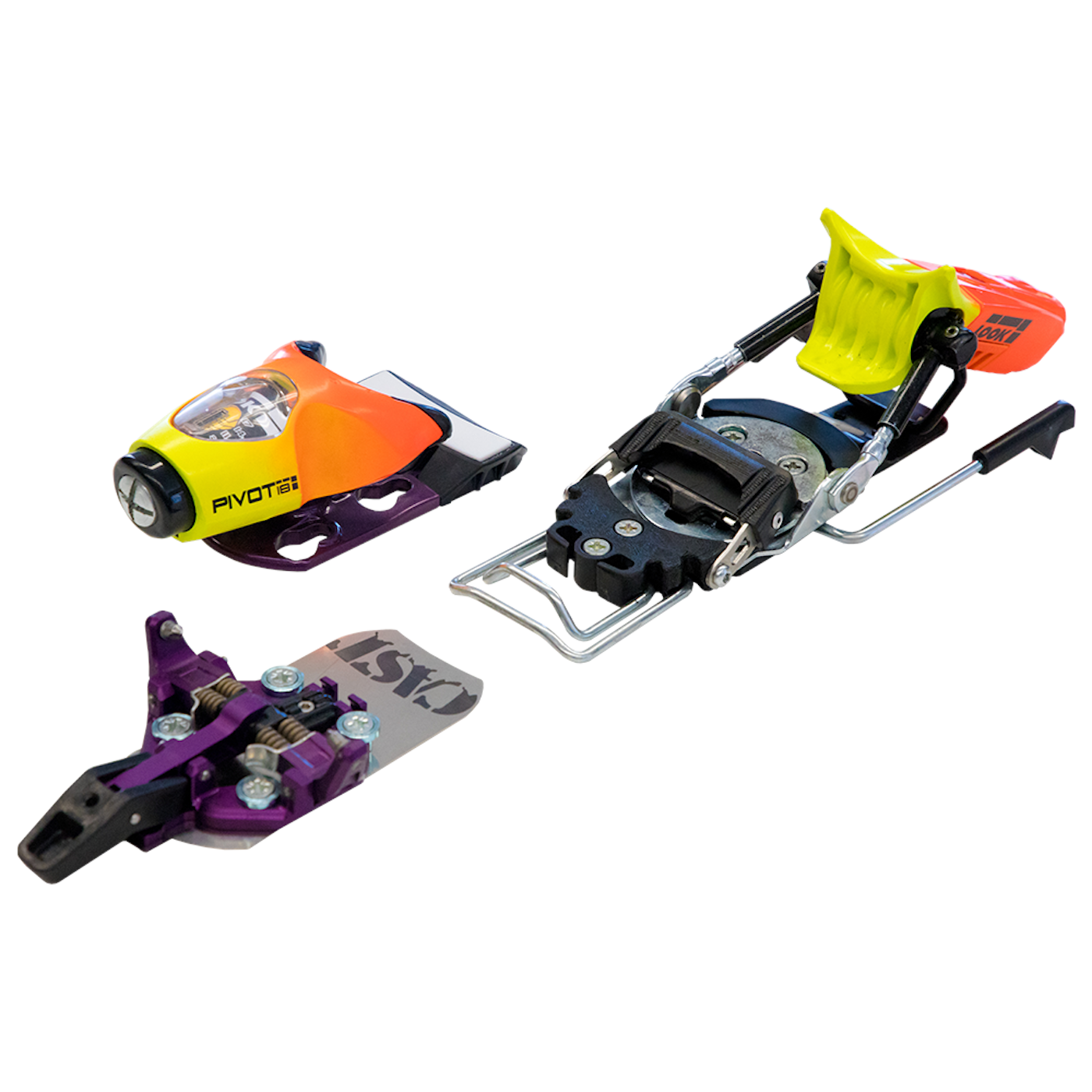
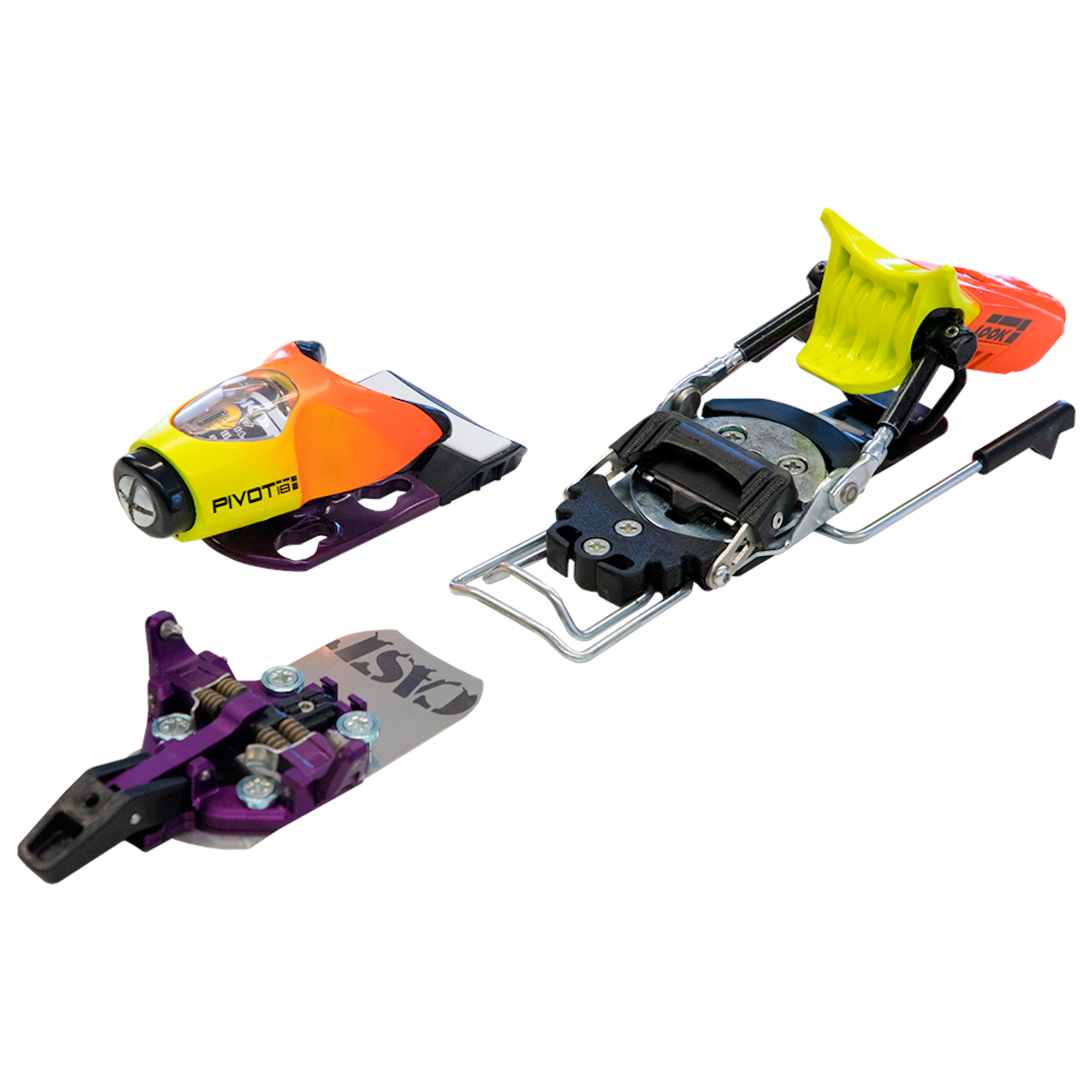
Cast Touring—founded by Freeride World Tour athletes Lars and Silas Chickering-Ayers—offers this aftermarket upgrade meant to provide the minimalist touring capabilities of a tech binding with the downhill performance of a fully-featured alpine binding. The system is built with a quick release plate that allows the user to swap out a low-profile tech toepiece for the uphill, with a traditional Look Pivot toepiece for the downhill. The upgraded binding weighs 2,000 grams per pair and has flat, eight and 12.5 degree climbing aids in tour mode. When converted to downhill, the Cast product offers 28 mm of vertical heel and 45 mm of lateral toe travel for dependable release during aggressive descents.
3. Atomic STH WR 16
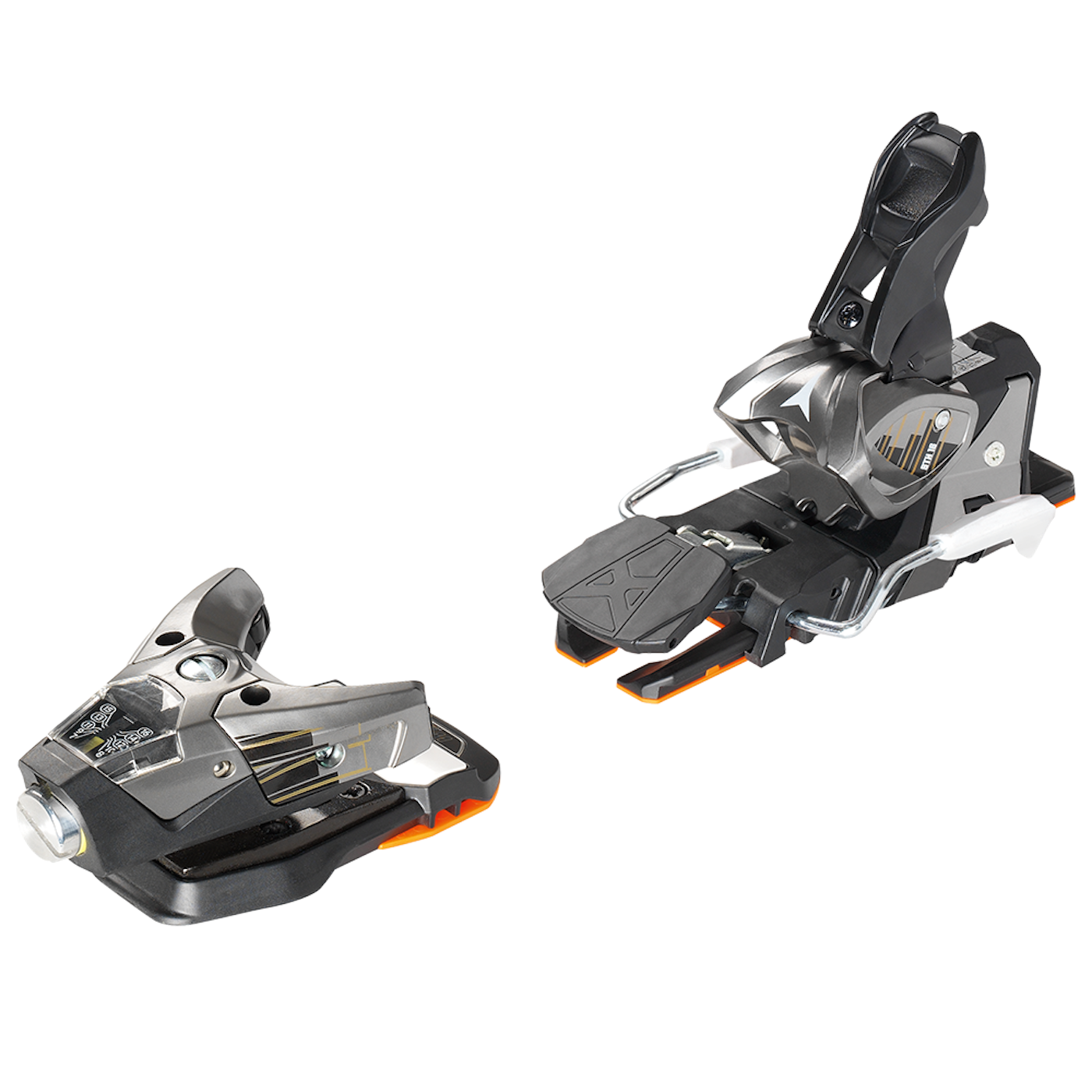
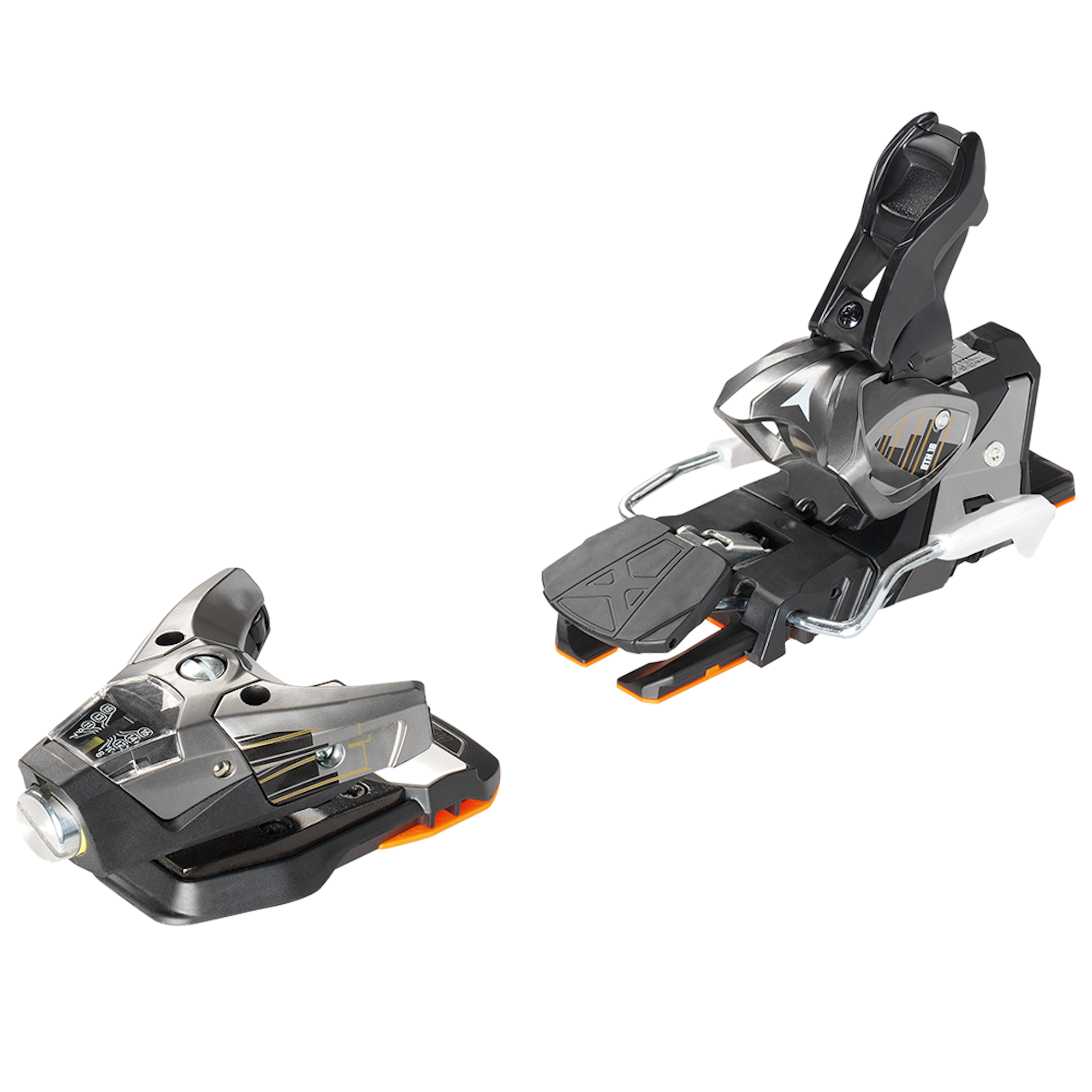
The STH WTR 16 is a beefcake binding—think Arnold Schwarzenegger in his body-building days—meant to help bold skiers conquer the mountain. An oversized mounting platform and shorter chassis ensure incredible power transmission and bring your boot closer to the ski for better control when piloting your skis down puckering lines. Atomic’s multi-directional release toepiece thwarts unwanted prerelease when sending ’er big, while special inserts under the toe and heel help smooth out the ride and provide added forgiveness. To round it out, the STH WTR 16 has an adjustable toe height that makes it compatible with DIN (ISO 5355), touring (ISO 9523) and walk to ride boot sole types.
4. Marker Alpinist
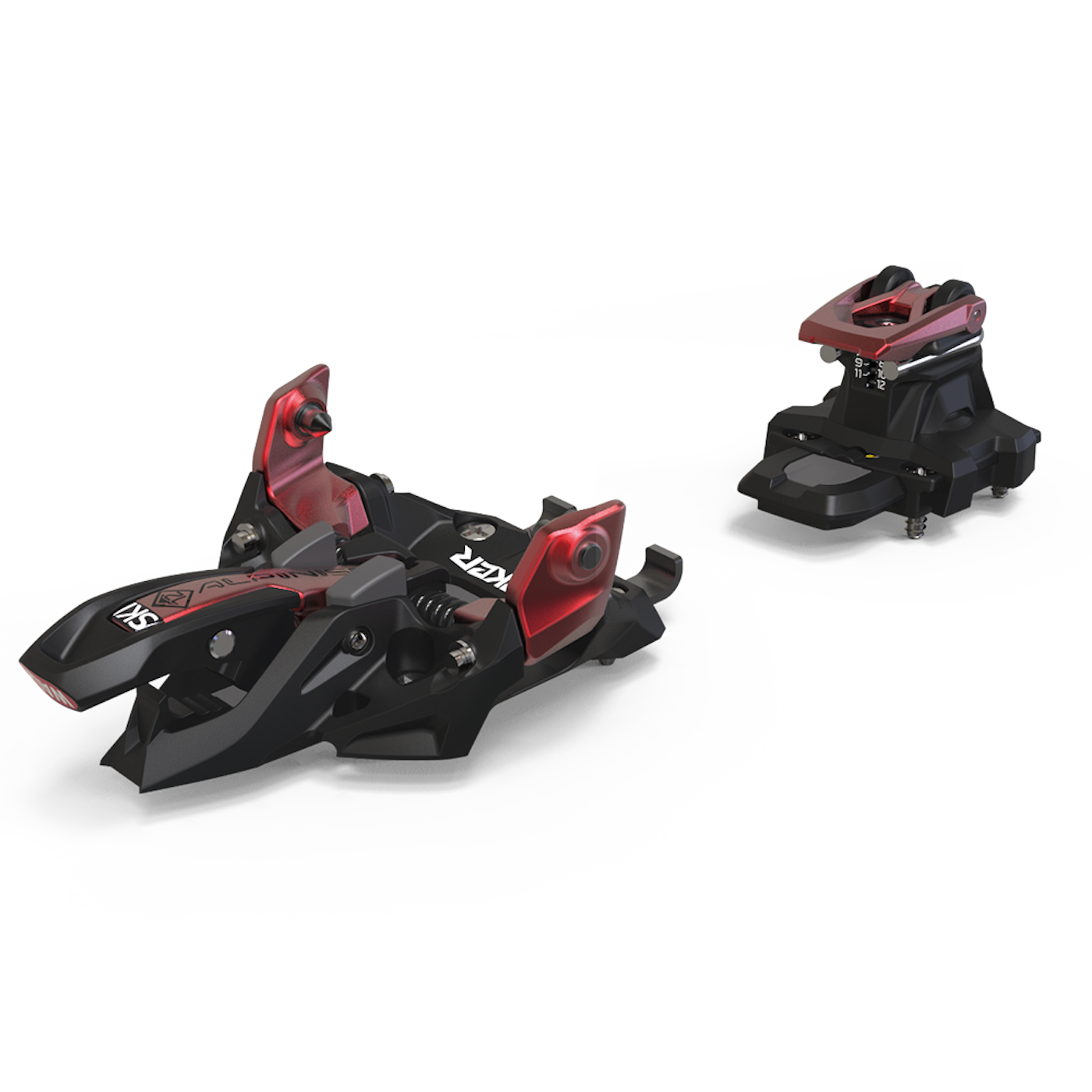
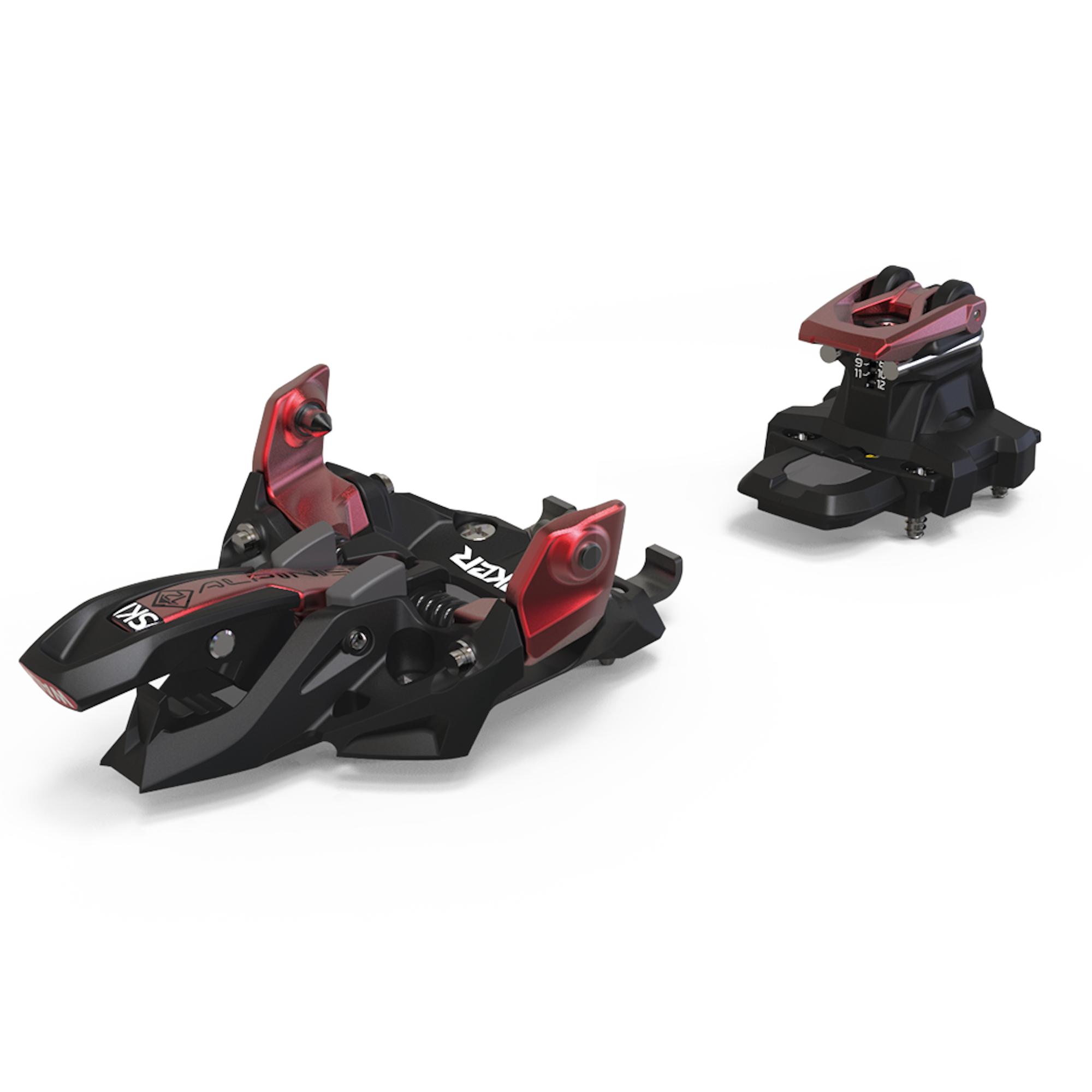
This new binding is geared toward backcountry enthusiasts who look to shed as much bulk as possible on the skin track. With a weight of 490 grams per pair, the Alpinist is Marker’s lightest touring binding to date. The Alpinist’s heel offers both a fixed upward release and an adjustable lateral release with a 15 mm range of modification. The toe springs are pre-set to release at a lower setting than the heel, making the heel the catalyst for determining release, boosting the safety factor. In tour mode, the binding offers zero, five and nine degree climbing aid positions. As for the downhill performance, a 38 mm wide mounting plate provides excellent power transmission and a strong, solid feel.
5. Salomon S/Lab Shift MNC
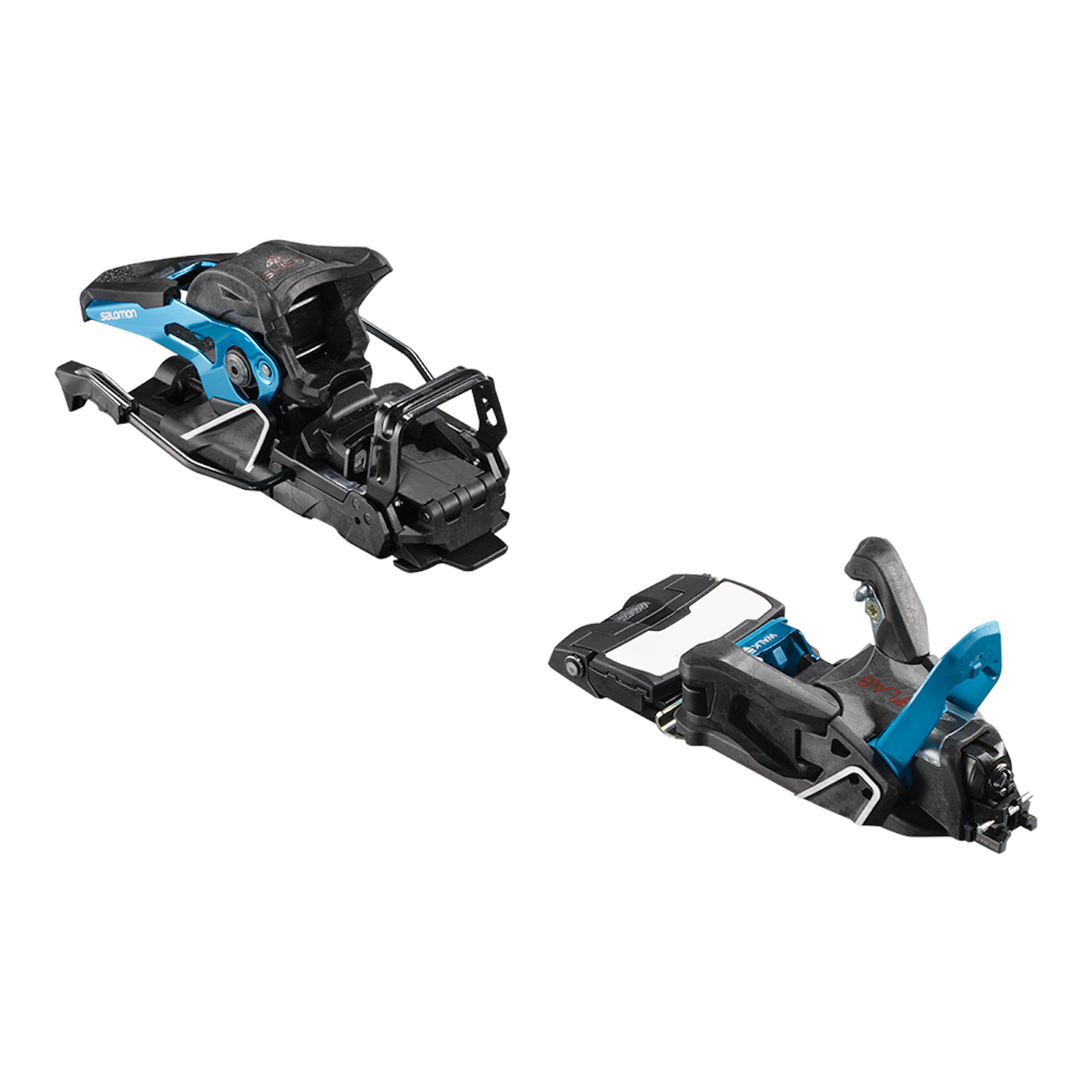
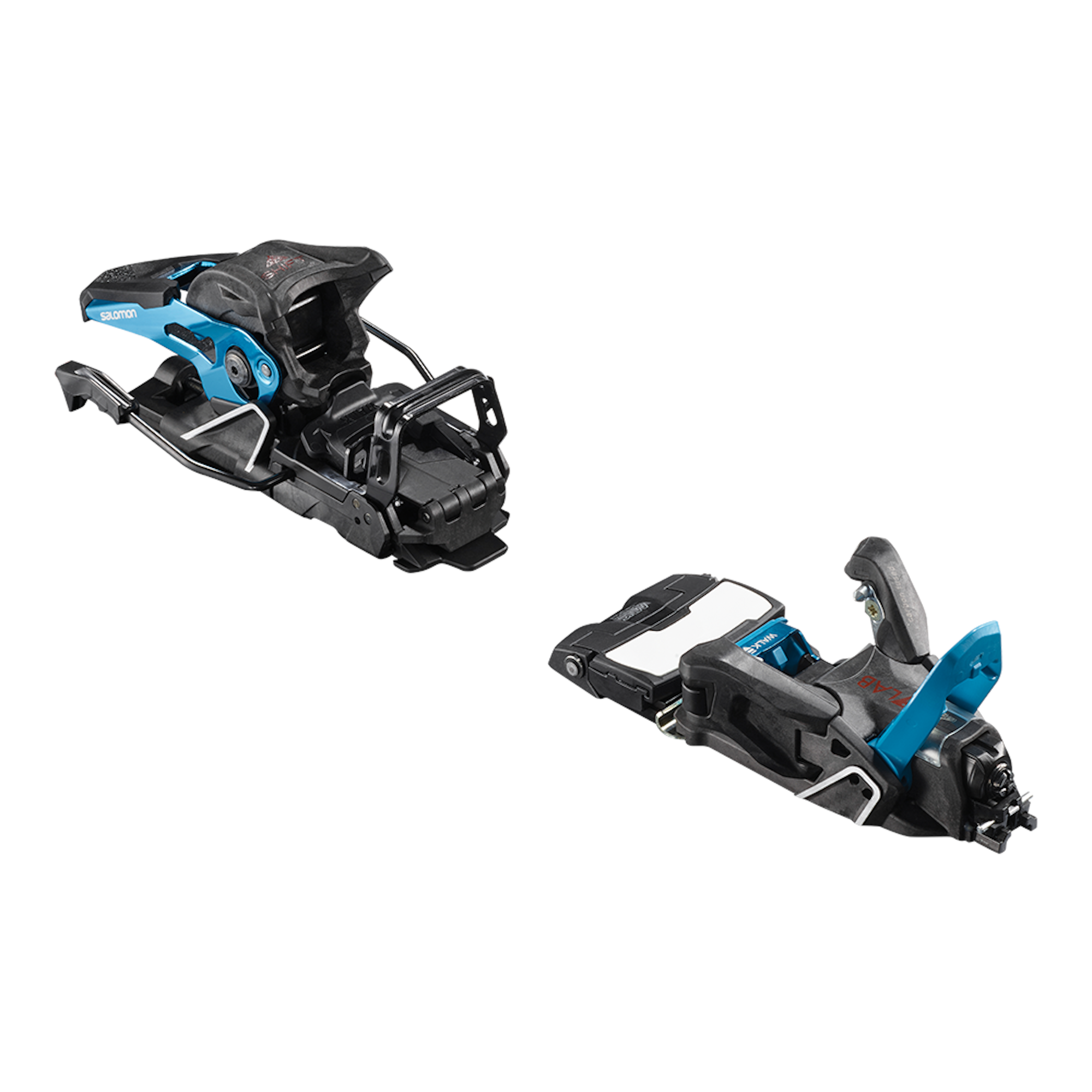
The new, innovative S/Lab Shift MNC is the ideal binding for those who split time between the resort and backcountry. Skiers can tour uphill via clamping pin-tech jaws in the toe and then ski downhill in a fully TÜV-certified alpine toe and heel. An innovative lever in the toe that opens up the jaws and then closes them to transform from tech to alpine and back makes all of this possible. The Shift is multi norm certified, meaning it accommodates all adult norm boot sole types. It weighs in at a manageable 865 grams per binding with screws and boasts a DIN range of 6 to 13. Dare we say it, the Shift may just be the quiver-killer of bindings.
6. Tyrolia AAAttack² 12 GW
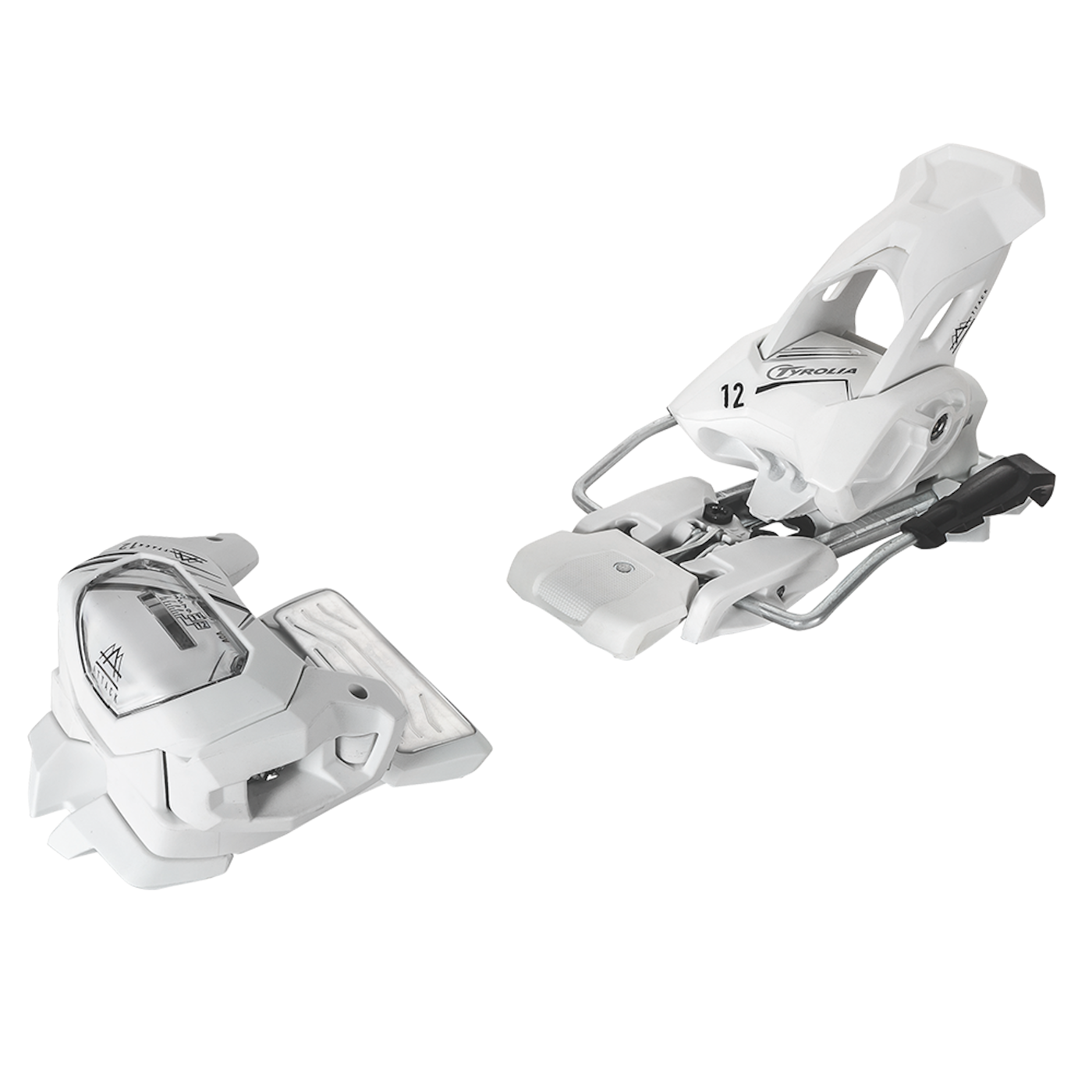
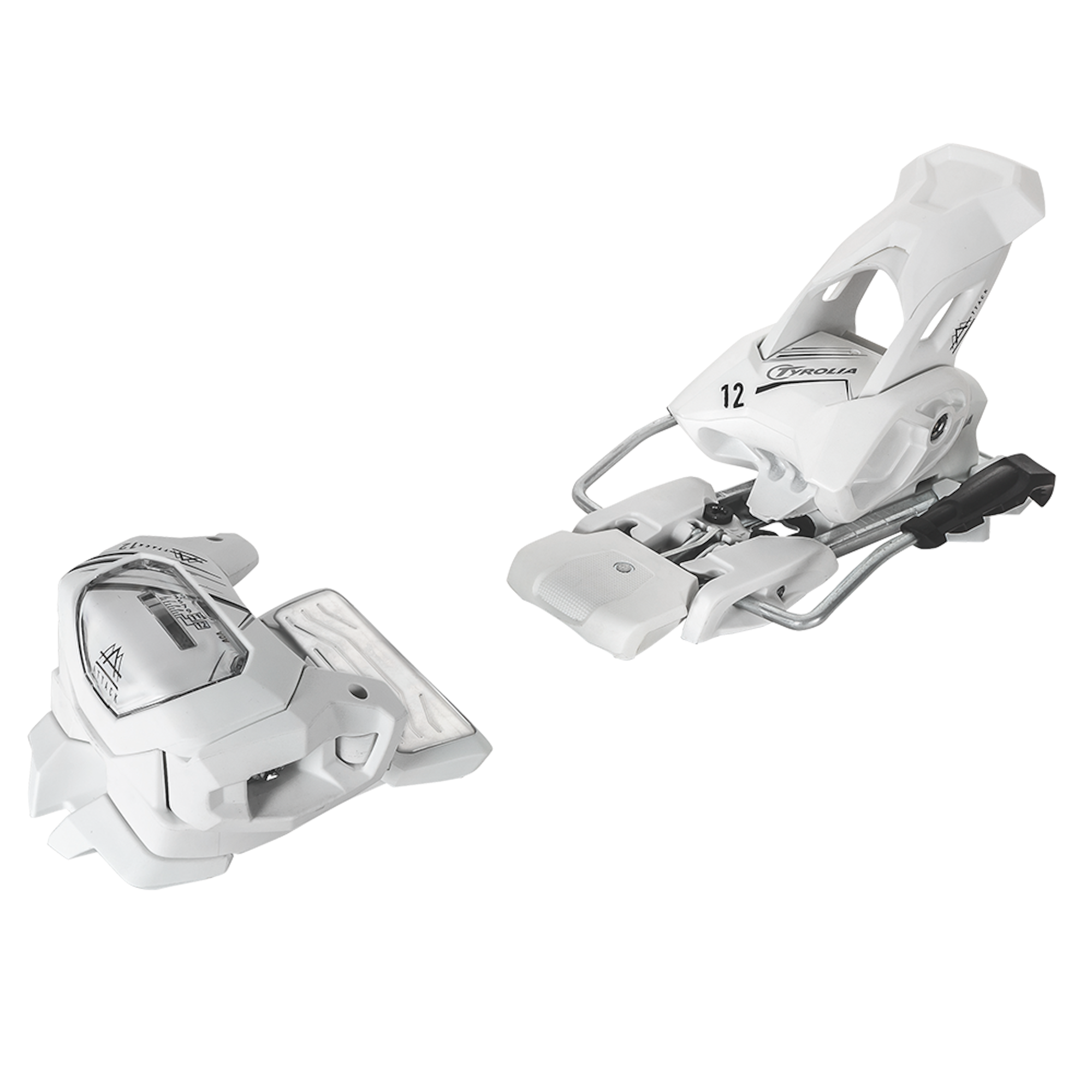
Tyrolia touts the AAAttack2 12 GW as “the shortcut to aggressive freeskiing for women,” and with a DIN range of 3.5 to 12 and low weight of 2,070 grams, we think they hit the nail on the head. And while it won’t bog you down, the binding can take the beatings of skiers who go full-send while still maintaining safety standards and downhill performance. Its FR Pro2 Toe has improved elastic travel and return to center capabilities over previous AAAttack models, and the NF FR heel is ultra-durable thanks to its connection to the ski via a metal heel track. Ladies and lighter weight shredders ready to send it, this “binder” is for you.
7. Look Pivot 18 Forza
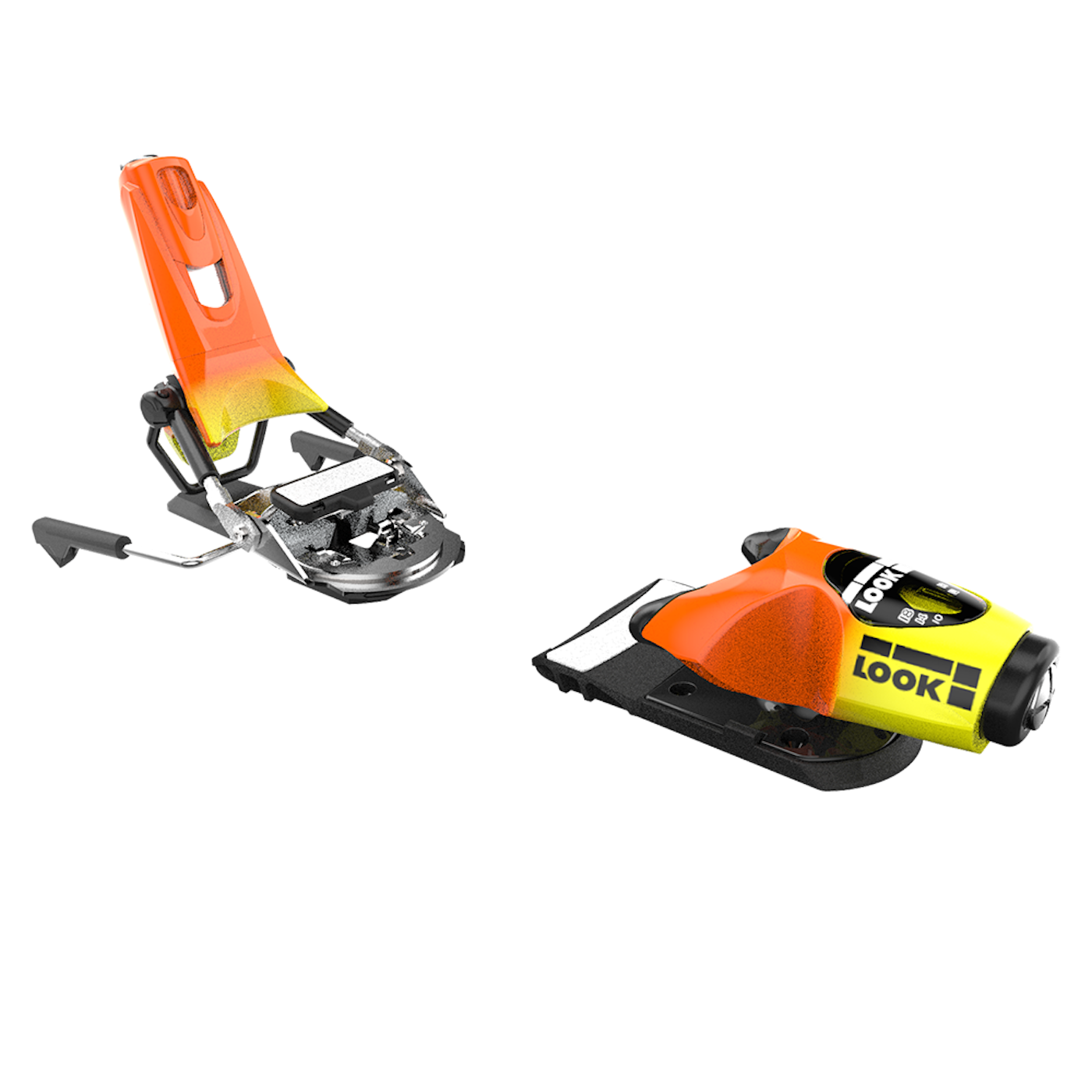
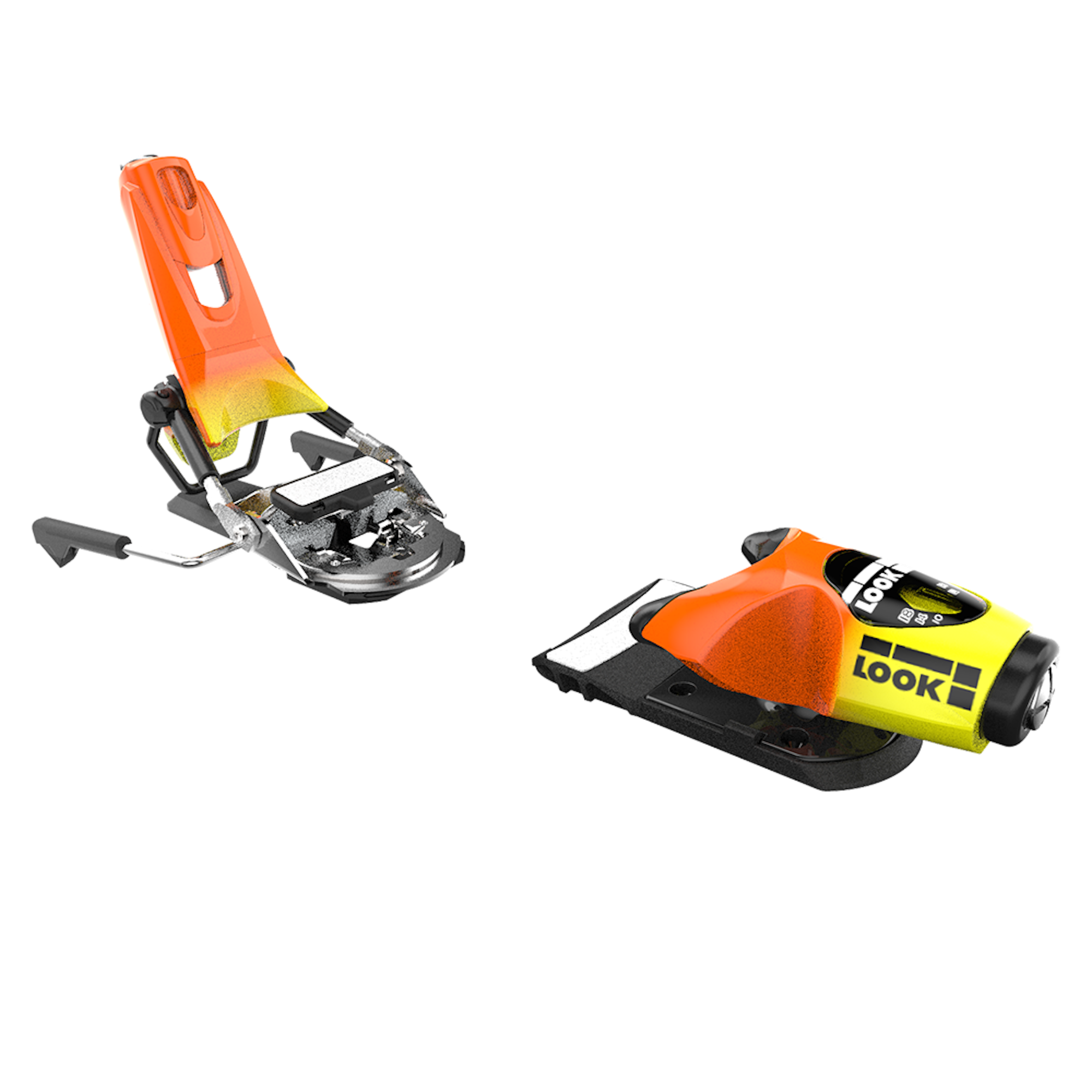
Look gave the trusted Pivot binding an aesthetic makeover in the form of a neon paint job made popular by Glen Plake and Alberto Tomba way back in the day. As always, the Pivot 18 is meant for skiers with a propensity for going huge. Its toe boasts 45 mm of lateral elastic travel and a 180 degree multi-directional release, while the heel allows 28 mm of vertical elasticity in a turntable design. That translates to top-of-the-line shock absorption and consistent release. If you’re into sending it off park jumps and big cliffs and are the nostalgic type, get your hands on the Pivot 18 Forza.
8. Dynafit Rotation ST 10
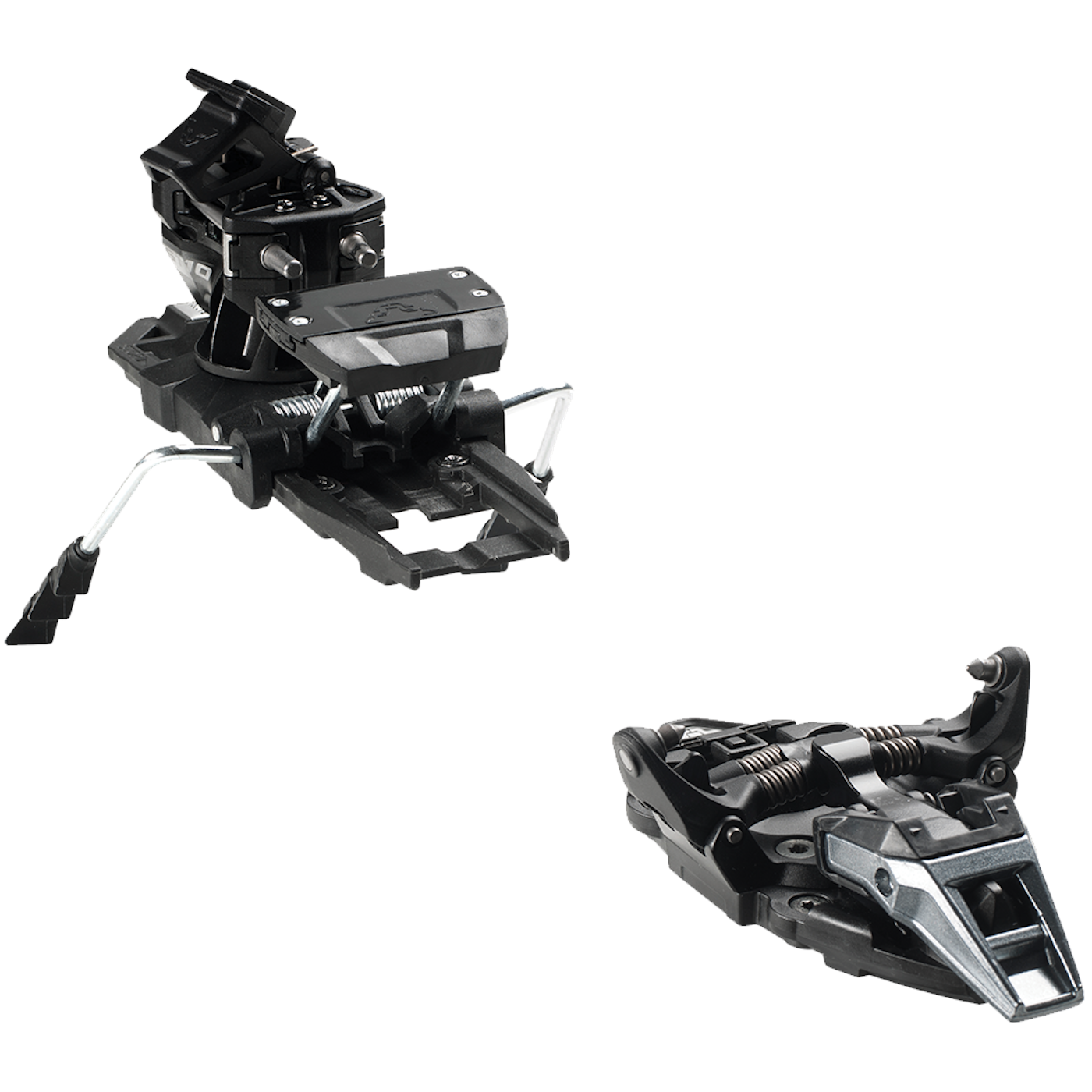
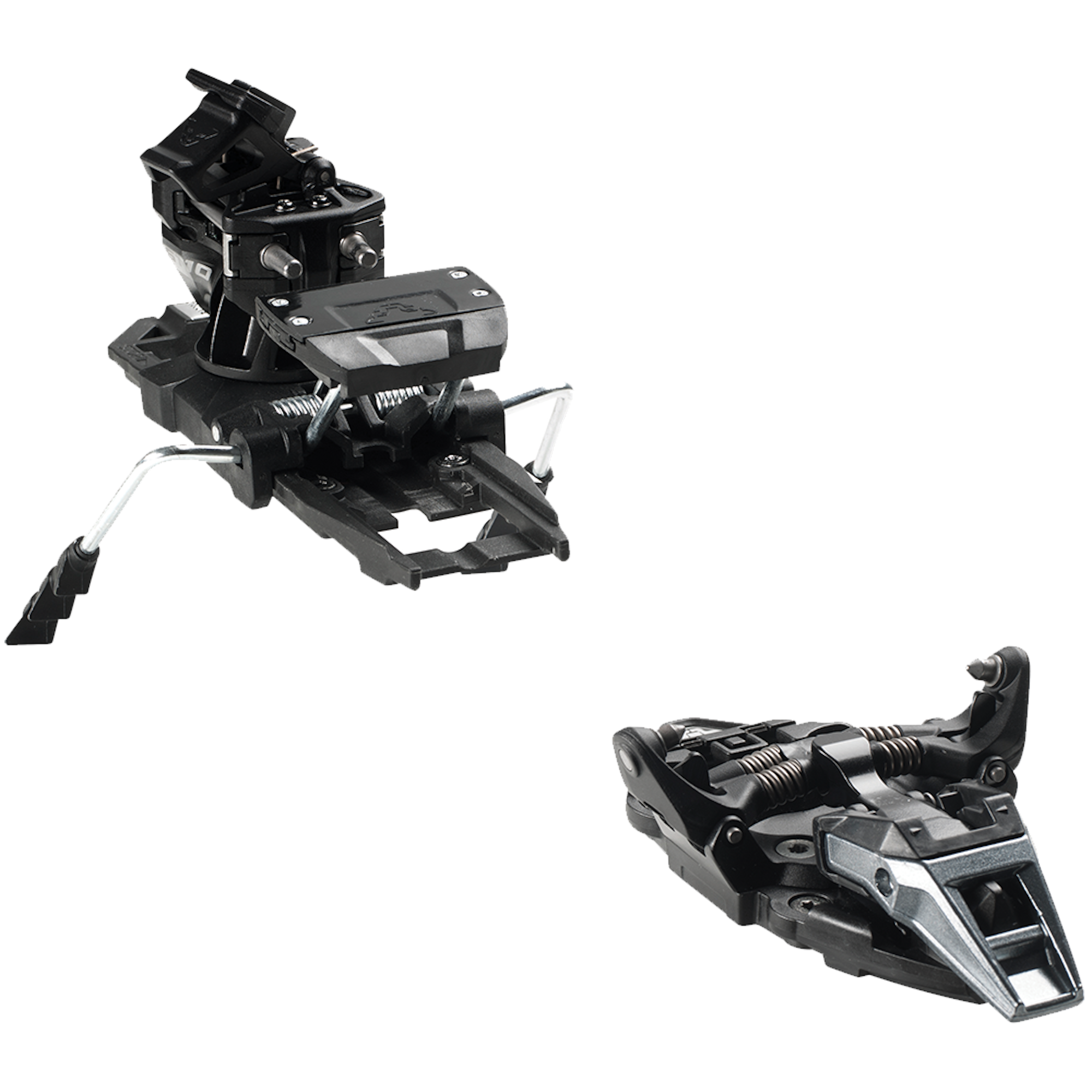
Dynafit’s Rotation ST 10 seeks to combine ease-of-use, safety and downhill performance. They’ve met that goal if you ask us. The binding features Dynafit’s hub-centering toepiece, which aligns the toe, boot heel and heelpiece for step-ins you can execute with your eyes closed. In terms of safety and reliability, the Rotation ST 10 is TÜV-certified and its heel boasts 10 mm of rearward travel, ensuring consistent release whether you’re surfing soft powder or charging through chewed up chunder. For the weight-conscious skier that puts a premium on descents (as well as step-in time), the Rotation ST 10 is a top-notch choice.
9. Marker Jester 16 ID
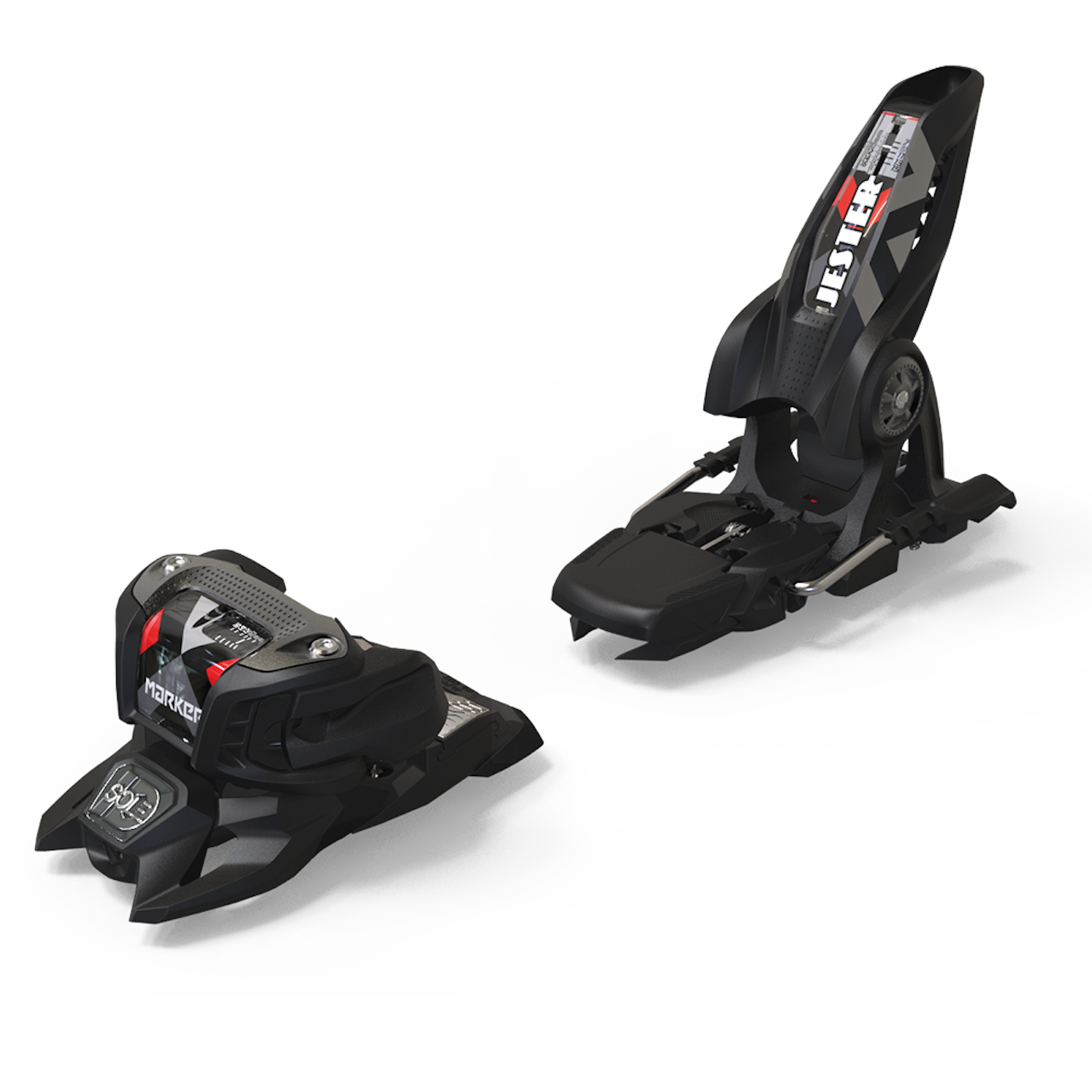
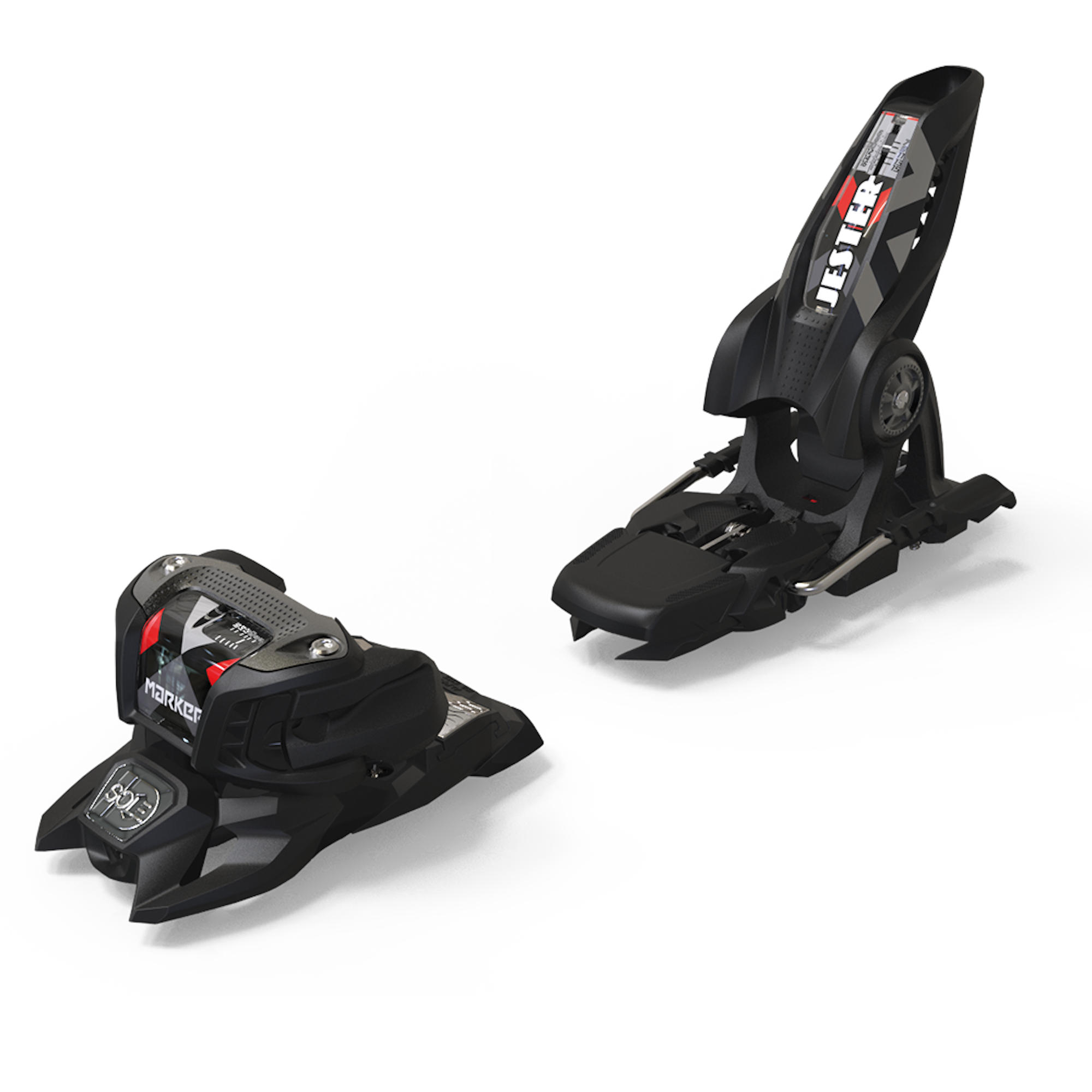
The Jester 16 ID binding from Marker is a rock-solid choice for those looking for the most aggressive descents both on- and off-piste. The binding offers top-of-the-line power transmission, thanks to a toepiece that boasts a huge platform with a connection from the toe wings through the base plate. Additionally, the heelpiece, when locked in, directs power directly at the boot lug for an even bigger boost in the power department. The toe and heel design both have shorter footprints to improve ski flex and decrease swing weight. Marker’s SOLE.ID also makes it compatible with Alpine norm and AT soles.

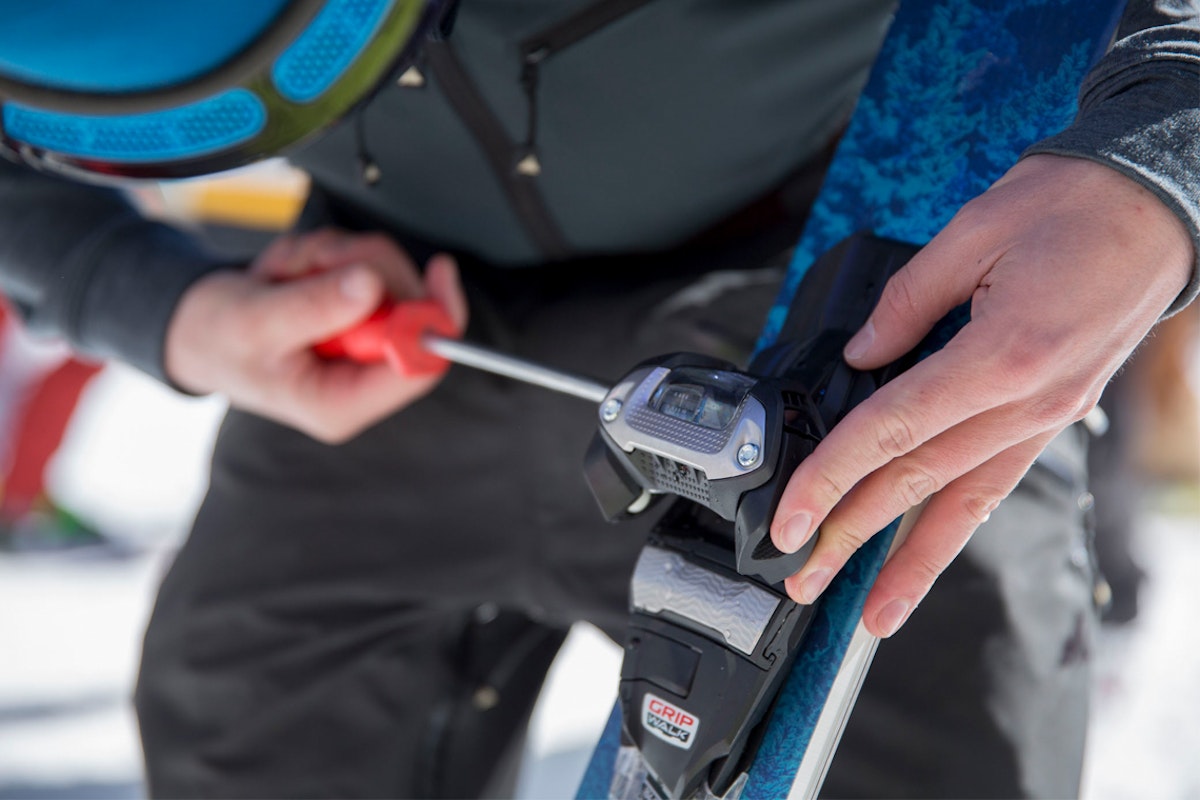

![[GIVEAWAY] Win a Head-to-Toe Ski Setup from IFSA](https://www.datocms-assets.com/163516/1765920344-ifsa.jpg?w=200&h=200&fit=crop)


![[GIVEAWAY] Win a Legendary Ski Trip with Icelantic's Road to the Rocks](https://www.datocms-assets.com/163516/1765233064-r2r26_freeskier_leaderboard1.jpg?auto=format&w=400&h=300&fit=crop&crop=faces,entropy)




![[GIVEAWAY] Win a Head-to-Toe Ski Setup from IFSA](https://www.datocms-assets.com/163516/1765920344-ifsa.jpg?auto=format&w=400&h=300&fit=crop&crop=faces,entropy)


